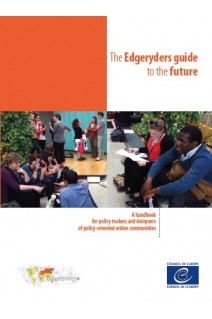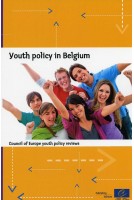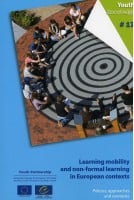



This publication is the result of the Edgeryders project, an online dialogue platform run by the Council of Europe with a view to promoting discussion with young people on the challenges of their transition to working life.
Given that the imagination and the experiences of young citizens can only be understood in the context of horizontal relations (learning though sharing and joint management) in line with the networking approach, which restores the significance of individual effort and provides innovative solutions, a programme such as Edgeryders can provide a future-oriented alternative.
In turn, institutions must show creativity. It is no longer a case of managing inertia, but above all of creating a balance between what the public authorities can do and what they can facilitate. By adopting a spirit of co-operation, the authorities can encourage the sharing of responsibilities, ideas, goods and values, while opening up to mutual learning.
Nevertheless, this type of interaction is only possible if two conditions are met. Firstly, institutions must show a clear desire to ensure unprecedented scope for dialogue with young people by ascribing a high value to the proposals that emerge from the contacts among and with young citizens. Secondly, young people’s interest in public affairs must be maintained in the long term by shoring up the online exchange with concrete evidence of legitimacy. This publication is intended to help meet these two conditions.
Foreword
Executive summary
How to use this guide
I. On being Edgeryders
Introduction
1. The multiple layers of the Edgeryders platform
2. Values and motivations
3. Risks
4. Resources
5. Responses
6. Scale
Conclusions
References
II. Transitioning into the future
Introduction
1. A European network of citizen experts
2. Overview of the youth policy landscape
3. Living on the edge
3.1. Realising value in work, in education, in communities
3.2. Making things happen
3.3. Building trust
3.4. New cultural norms
4. Call to action
4.1. Champion new cultural norms
4.2. Redesign policy-making processes
4.3. Provide more timely support mechanisms
4.4. Take some risks!
Conclusions
References
Appendix A – Engaging the citizen expert – A user’s manual for the European scale
Appendix B – An open letter to funders and supporters of innovation









This publication is the result of the Edgeryders project, an online dialogue platform run by the Council of Europe with a view to promoting discussion with young people on the challenges of their transition to working life.
Given that the imagination and the experiences of young citizens can only be understood in the context of horizontal relations (learning though sharing and joint management) in line with the networking approach, which restores the significance of individual effort and provides innovative solutions, a programme such as Edgeryders can provide a future-oriented alternative.
In turn, institutions must show creativity. It is no longer a case of managing inertia, but above all of creating a balance between what the public authorities can do and what they can facilitate. By adopting a spirit of co-operation, the authorities can encourage the sharing of responsibilities, ideas, goods and values, while opening up to mutual learning.
Nevertheless, this type of interaction is only possible if two conditions are met. Firstly, institutions must show a clear desire to ensure unprecedented scope for dialogue with young people by ascribing a high value to the proposals that emerge from the contacts among and with young citizens. Secondly, young people’s interest in public affairs must be maintained in the long term by shoring up the online exchange with concrete evidence of legitimacy. This publication is intended to help meet these two conditions.
Please note that in accordance with our terms & conditions, PDF/epubs may only be purchased by private individuals.
